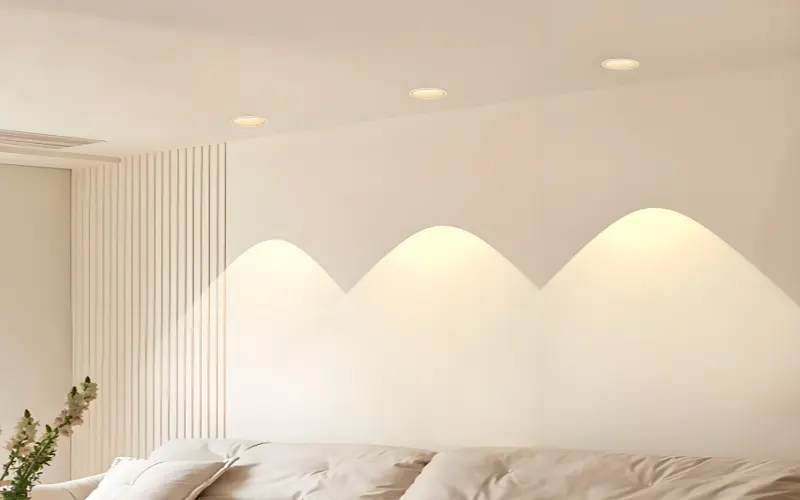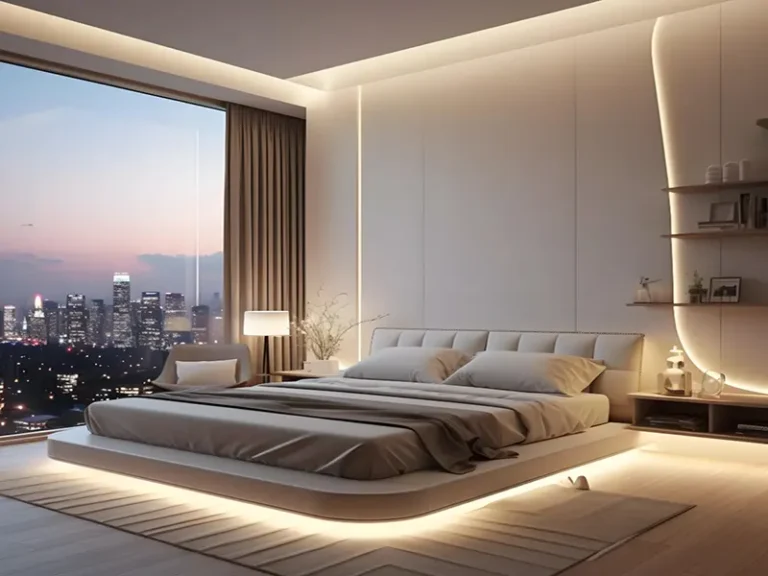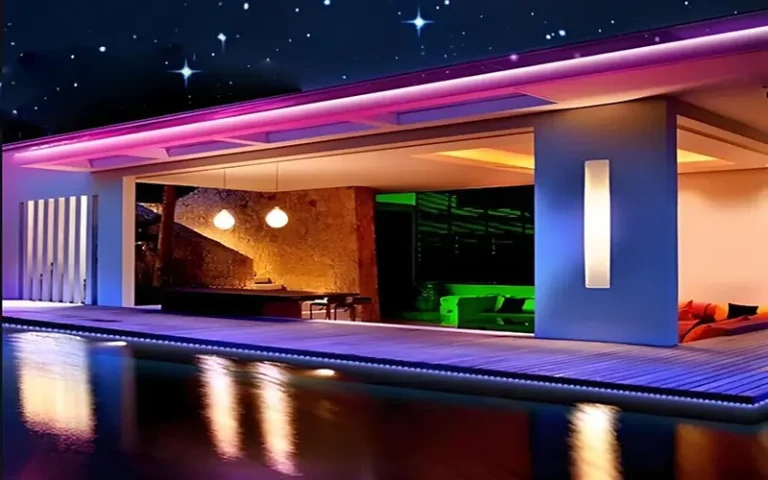What is Anti-Glare Light and How To Reduce Light Glare?
In lighting, a common scene is glare. Glare can cause discomfort, reduce visibility, and even cause eye fatigue. In order to completely solve this problem, lighting designers have developed anti-glare light solutions, including upgrading LED light products, and minimizing the impact of glare in installation and matching design. In this article, we will take a deep look at what anti-glare light is, explore different types of anti-glare lighting, and discuss various methods of reducing light glare.
Which Lamps are Prone to Glare Light?
First, let’s divide the lights under the board that can cause glare. We all avoid choosing lamps that cause glare. And how to modify the current glare lamps.
1. Lamps with exposed light sources
In our lives, there are LED bulbs, incandescent lamps or energy-saving lamps without lampshades. Without lampshades, the brightness is too strong, which will irritate the eyes and cause glare.
2. High-brightness spotlights or downlights
Spotlights and downlights installed too low or at an inappropriate angle will project strong light directly into the human eye, which can also cause eye discomfort.
3. Mirror reflective lamps
Lamps with reflective surface materials (such as highly reflective metal lampshades) can easily reflect light into people’s eyes, especially in places with reflective surfaces such as offices or kitchens.
4. Headlights
High beams, LED headlights and modified high-brightness xenon lamps, especially when driving at night, can cause severe glare to oncoming drivers.
5. Outdoor electronic billboards
Displays with excessive brightness and high contrast at night can cause visual fatigue and instant blindness to passers-by.
6. Improper use of LED strip lights
Most LED strip lights are IP20 non-waterproof bare board CPB when installed. If there is no aluminum profile or diffuser to block it, the LED point light source is prone to cause dazzling glare.
What Harm Does Light Glare Do to Human Eyes?
Glare is not simply “bright”, it can cause interference or discomfort to the human eye visual system. Common manifestations include:
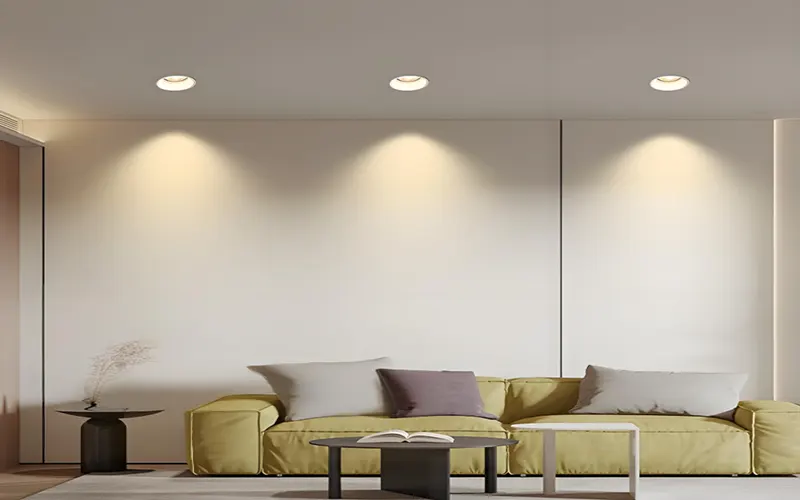
Eye pain: When strong light shines directly on your eyes, your eyes may feel obvious discomfort, and you may even close or blink your eyes reflexively.
Temporary blurred vision: When you are exposed to uncomfortable light, you will not be able to see the details of objects or text clearly, and the visual contrast will decrease.
Halo or double image: Blurred aperture or double image phenomenon appears around the light source.
Eye fatigue: Working in a glare environment for a long time can easily cause eye soreness, dizziness, and lack of concentration.
What is an Anti-Glare Light?
Anti-glare lights, as we understand it, are lighting devices designed to minimize or eliminate the discomfort and visual disturbance caused by glare.
They are specially designed to reduce the intensity of light reflected from surfaces such as screens, water or polished surfaces, making them more comfortable for the eyes.
Anti-glare lights are commonly used in a variety of environments, including offices, homes and car interiors, where strong light may cause discomfort or interfere with vision.
Types of Anti-Glare Light
- LED Anti-Glare Lamps: These lamps use LED technology to produce light that is less likely to cause glare. They are energy-efficient, durable, and often have adjustable brightness settings to further reduce glare.
- Polarized Light: Polarization can filter out light at specific angles, effectively reducing glare from reflective surfaces such as water or glass. This technology is common in sunglasses and certain types of display screens.
- Diffused Lighting: Diffuse lighting uses materials or designs to scatter light, thereby reducing the intensity and glare of direct light sources. This can be achieved by using frosted glass, diffuser panels, or specially designed lamps.
How to Reduce Light Glare?
- Avoid direct light sources: on reflective materials such as mirrors and glass: reflections will increase glare.
- Use anti-glare screens: For electronic devices such as computers and tablets, anti-glare screens can significantly reduce reflected light, making them more comfortable for the eyes.
- Choose lamps with anti-glare design: such as honeycomb grilles, frosted diffusers, deep downlights, etc. This prevents direct light.
- Pay attention to the installation angle and height: especially for indoor spotlights and downlights. Avoid direct eye contact with spotlights; downlights should be deeply embedded and adjustable in angle.
- Adjust Lighting: Properly adjusting the lighting in a room can help reduce glare. This may involve using dimmer switches, repositioning light sources, or adding shades or diffusers to direct light.
- Choose the right lighting: It is crucial to choose the right lighting for the specific environment. For example, use warm and soft lighting instead of dazzling bright lights, and try to use warm white light (2700K-4000K) and medium brightness (200-500lx) lamps.
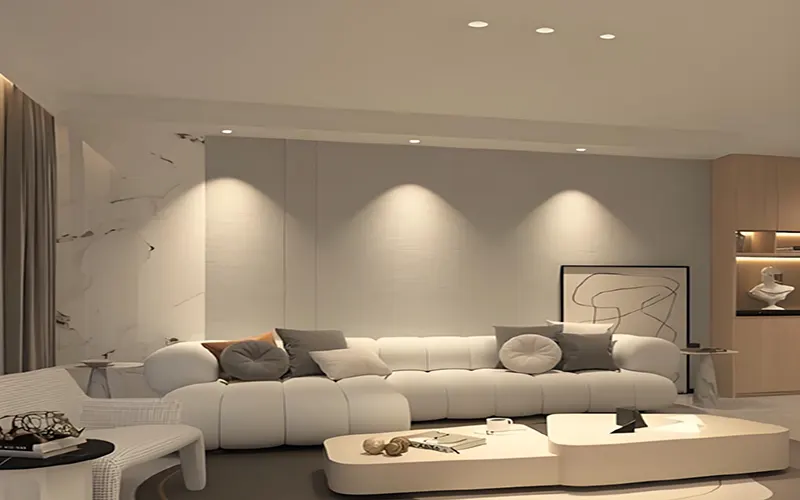
What are the Benefits of Anti-glare?
In lighting installation, we all need to consider whether the lamp has glare. If so, we need to think about how to reduce the impact of glare on people.
- Improved Comfort: Reducing glare can make the space more comfortable and reduce stress. At the same time, it can effectively prevent headaches, eyestrain and other discomforts related to bright reflections.
- Better Vision: Reducing glare helps protect vision and reduces eye strain. This is especially important for people who spend long periods of time staring at a screen or working under bright light.
- Enhanced Productivity: In a work environment, reducing glare can improve concentration and thus increase employee productivity. If employees work in a glare environment for a long time, they will be distracted by bright lights or reflective surfaces.
Conclusion
We need to pay attention to anti-glare light issues to improve people’s comfort and functionality in lighting situations. We need to minimize or eliminate glare, including using anti-glare lamps and other techniques discussed in this article. This goal can be achieved by understanding the different types of anti-glare lamps and implementing practical tips for reducing glare.

